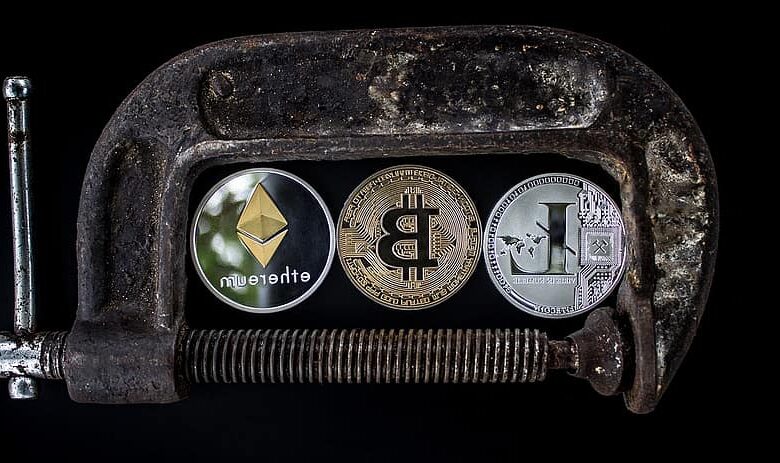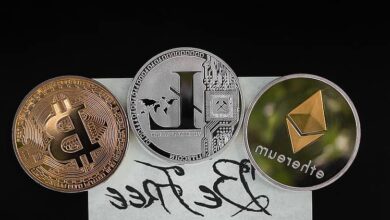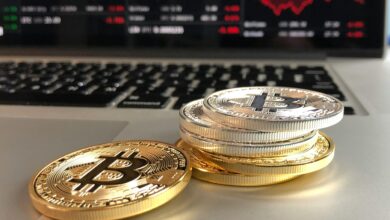Crypto Investing: Strategies for the Digital Asset Market

The landscape of global finance has experienced a rapid, fundamental, and irreversible transformation with the emergence of cryptocurrencies and the broader asset class known as digital assets. For generations, investment was confined to tangible assets like real estate and paper securities like stocks and bonds.
This established model was relatively slow and heavily dependent on centralized intermediaries, such as banks and stock exchanges. The advent of blockchain technology has challenged this status quo, introducing a new paradigm where value can be created, transferred, and stored digitally without any central authority.
Crypto asset investment is the specialized discipline dedicated to allocating capital into this volatile, high-growth sector. It demands a unique blend of technological understanding, traditional financial acumen, and extreme risk tolerance.
This field is far more than speculative trading. It is a strategic effort to gain exposure to the foundational infrastructure and innovation of the decentralized digital economy.
Understanding the mechanics, risks, and diverse strategies inherent in this market is the non-negotiable first step toward navigating the future of wealth creation successfully.
The Foundational Shift in Digital Ownership
The core difference between traditional investing and crypto asset investment lies in the nature of the asset itself. Traditional assets represent a claim on a physical resource or a centralized corporation. Digital assets represent ownership recorded immutably on a decentralized, distributed ledger (the blockchain). This shift creates a unique investment proposition.
Cryptocurrency investment offers exposure to a technology that is fundamentally disrupting finance, supply chains, and digital identity. Investors are not just buying a coin; they are buying into the network’s potential utility and future growth. The value of the asset is directly tied to the adoption rate and the security of the underlying blockchain protocol.
The concept of digital scarcity is paramount to this asset class. Assets like Bitcoin have a finite, mathematically enforced supply. This scarcity makes the asset deflationary in nature. It contrasts sharply with fiat currencies, which can be inflated by central banks at will. This programmed scarcity is the main driver of long-term value for certain crypto assets.
However, the market is characterized by extreme volatility. Prices can move dramatically in short periods. This high risk is directly correlated with the high growth potential and the nascent, developing stage of the industry. Investors must acknowledge and manage this inherent price fluctuation aggressively.
Understanding Crypto Asset Categories
The term “crypto asset” is broad, encompassing several distinct types of digital assets that serve vastly different purposes. An effective investment strategy requires clear differentiation between these categories. Their risk profiles and intended functions vary significantly.
A. Currencies (Store of Value)
These assets, led by Bitcoin (BTC), are primarily designed to function as decentralized, censorship-resistant money and a long-term store of value. Their utility is derived from their scarcity, security (via Proof-of-Work), and robust decentralization. Investment in this category is often viewed as a macro hedge against the traditional financial system and inflation. They are typically held for the long term.
B. Platform Tokens (Utility)
These tokens, led by Ethereum (ETH), power the underlying smart contract platforms. They are essential for paying transaction fees (“gas”) to execute code and run decentralized applications (dApps). Their value is tied directly to the platform’s utility and developer adoption. Investment in this category is a bet on the future success of decentralized application building.
C. Decentralized Finance (DeFi) Tokens
These tokens govern and incentivize participation in Decentralized Finance (DeFi) protocols. They include governance tokens, which grant holders voting rights on protocol changes. They also include tokens used for yield farming and liquidity provision. Investment in DeFi is often higher risk but offers potential exposure to high yields and automated financial services.
D. Stablecoins
Stablecoins are designed to maintain a stable value, typically pegged 1:1 to a fiat currency like the U.S. dollar. They are essential for traders seeking temporary shelter from volatility without moving back to a traditional bank account. While primarily a medium of exchange, they are vital for accessing yield in DeFi. Stablecoins are used as the foundational asset for lending.
E. Non-Fungible Tokens (NFTs)
Non-Fungible Tokens (NFTs) represent unique digital ownership rights over specific assets, such as digital art, collectibles, or in-game items. Unlike cryptocurrencies, NFTs are not mutually interchangeable. Investment in NFTs is highly speculative, driven by cultural value, scarcity, and community association.
Fundamental Investment Strategies

Entering the crypto asset market requires choosing a disciplined investment strategy. The extreme volatility makes emotional decision-making particularly dangerous. Strategies range from long-term, passive accumulation to high-frequency, active trading.
F. Buy and Hold (HODLing)
The Buy and Hold strategy, colloquially known as HODLing, involves purchasing assets with a strong conviction in their long-term potential. The investor minimizes transaction frequency and ignores short-term price fluctuations. This passive approach seeks to capture the immense growth potential of the asset over a multi-year time horizon. It is generally the safest strategy for newer investors.
G. Dollar-Cost Averaging (DCA)
Dollar-Cost Averaging (DCA) is a behavioral strategy highly recommended for volatile assets. It involves investing a fixed dollar amount at regular intervals, regardless of the current asset price. This approach prevents the investor from making the mistake of buying a large sum at a market peak. DCA lowers the average purchase cost over time and enforces emotional discipline.
H. Active Trading
Active Trading involves frequent buying and selling to profit from short-term price movements and volatility. This strategy requires advanced analytical skills, precise timing, and extensive market knowledge. Active trading is highly time-consuming, incurs significant transaction fees, and carries the highest risk of capital loss. Most individuals fail to generate consistent profit with this method.
I. Yield Generation and Staking
This strategy involves deploying existing crypto assets to generate an income stream. Staking involves locking up tokens in a Proof-of-Stake network to secure the blockchain and earn block rewards. Yield Farming involves providing liquidity to DeFi protocols in exchange for newly issued governance tokens or interest payments. This income-focused strategy carries the inherent risk of smart contract failure or regulatory changes.
Managing Extreme Volatility and Risk
Volatility is the defining characteristic of the crypto market. Effective risk management is non-negotiable for sustained success in this asset class. Ignoring risk will almost certainly lead to rapid, substantial loss of capital.
Position sizing is the most basic and vital risk control mechanism. Investors should only allocate a small, measured portion of their total investment portfolio to crypto assets. This limitation ensures that even a catastrophic loss in the crypto market does not jeopardize the investor’s overall financial security.
Setting strict stop-loss orders is a mechanism used by active traders to limit potential losses automatically. A stop-loss order sells an asset automatically if its price falls below a predetermined level. This control removes emotion from the selling decision.
Diversification is essential in the crypto market, but it must be done intelligently. Simply owning 50 different small-cap tokens does not effectively mitigate risk. Investors should diversify across different categories (e.g., store of value, platform utility, and stablecoin yield) and across multiple blockchains. The goal is exposure to varied risk profiles.
The risk of exchange failure or hacking is existential. Investors should utilize secure cold storage wallets (hardware devices) to hold the vast majority of their assets offline. Funds left on centralized exchanges are vulnerable to hacking and bankruptcy risks. Protecting the private key is the ultimate security measure.
The Role of Fundamental Analysis

While traditional financial metrics are often limited in the crypto space, Fundamental Analysis still plays a critical role in assessing the long-term viability of a project. Fundamental research focuses on the underlying technology, team, and economic model. This provides the rationale for long-term investment conviction.
J. Tokenomics Assessment
Tokenomics is the study of the project’s economic design. Investors must analyze the asset’s supply schedule, inflation rate, and utility mechanisms. A poorly designed supply model, such as one with excessive future token issuance, indicates a weak long-term investment prospect. Sustainable utility is paramount.
K. Development Activity
Assessing the developer activity on the protocol’s GitHub or code repository provides a tangible measure of the project’s health and commitment. A high volume of code commits and an active developer community signal a project that is growing and maintaining its technological edge. Low activity suggests the project may be stagnant or abandoned.
L. Community and Governance
The strength and decentralization of the project’s community and governance structure are critical non-financial factors. A highly decentralized project with broad community participation is less vulnerable to single-point failure or censorship. Analyzing the distribution of voting power (governance tokens) is essential.
M. Use Case and Adoption
The project must have a clear, real-world use case that solves a genuine problem. Investment conviction is built on the belief that the project will achieve widespread commercial adoption and utility. Token value must be underpinned by actual demand for the network’s service, not just speculative hype.
Conclusion
Crypto asset investment is a highly volatile but necessary strategy for participating in the future digital economy.
The market is anchored by Bitcoin (store of value) and Ethereum (programmable utility), which define the technological standards.
Successful, long-term investment is best achieved through disciplined, passive strategies like Dollar-Cost Averaging (DCA).
Extreme volatility necessitates robust risk management, achieved primarily through careful position sizing and secure asset storage.
The ultimate security of any crypto asset rests on the user’s non-delegable responsibility to protect the private cryptographic key.
Yield generation strategies, such as staking, offer income exposure but carry inherent risks related to smart contract failure.
Fundamental analysis must focus on the sustainability of the project’s economic model (Tokenomics) and its active developer community.
Diversification should be strategic, spreading capital across different categories like platform tokens, store-of-value assets, and stablecoins.
The growth of this sector is intrinsically tied to global technological adoption and the increasing demand for decentralized financial services.
This asset class offers a unique, powerful hedge against the traditional financial system’s reliance on centralized monetary policy.
Crypto investment is a strategic, high-growth commitment to the innovative, decentralized infrastructure of the Web3 world.
Mastering the specialized risks and analytical tools is the indispensable key to securing wealth in this revolutionary financial market.


